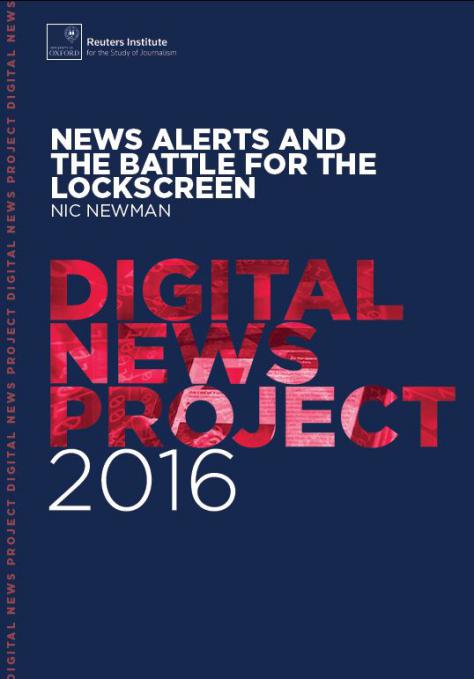News Alerts and the Battle for the Lockscreen

DOI: 10.60625/risj-7d70-cs27
As we move from a world of information scarcity to one of abundance, a key question is how publishers and brands can attract attention and build habit. This is a pressing issue on the smartphone, where consumers spend the majority of time with a handful of apps that in most cases do not include news publishers. Our own research has tracked the growing importance of smartphones, the problems of visibility for news brands, as well as the trend to use distributed platforms like social networks to consume news on these devices.
Publishers see the combination of news apps and mobile notifications as a key channel for rebuilding direct relationships with users on this critical device, unmediated by third parties. The amount of consumer usage of news notifications has tripled in many countries over the last three years while news organisations have been steadily increasing the volume of news alerts (Newman 2016).
Other evidence shows that alerts from news publishers can lead to more frequent usage of specific news apps building loyalty that may ultimately help deliver revenue. On the smartphone, apps and notifications go hand in hand as pings and buzzes increasingly both interrupt and engage as we go about our busy daily lives. In this regard, the smartphone lockscreen and the accompanying notification-centres on Apple and Android devices look set to become a critical battleground for publishers, platforms and advertisers. But how do consumers feel about the rising tide of alerts on their smartphones? Are they engaged or annoyed? What makes a good or bad alert? How important is news as a notification category and how might these alerts develop in the years ahead? These were some of the key questions we wanted to address in this research paper using quantitative and qualitative methods across four countries.





